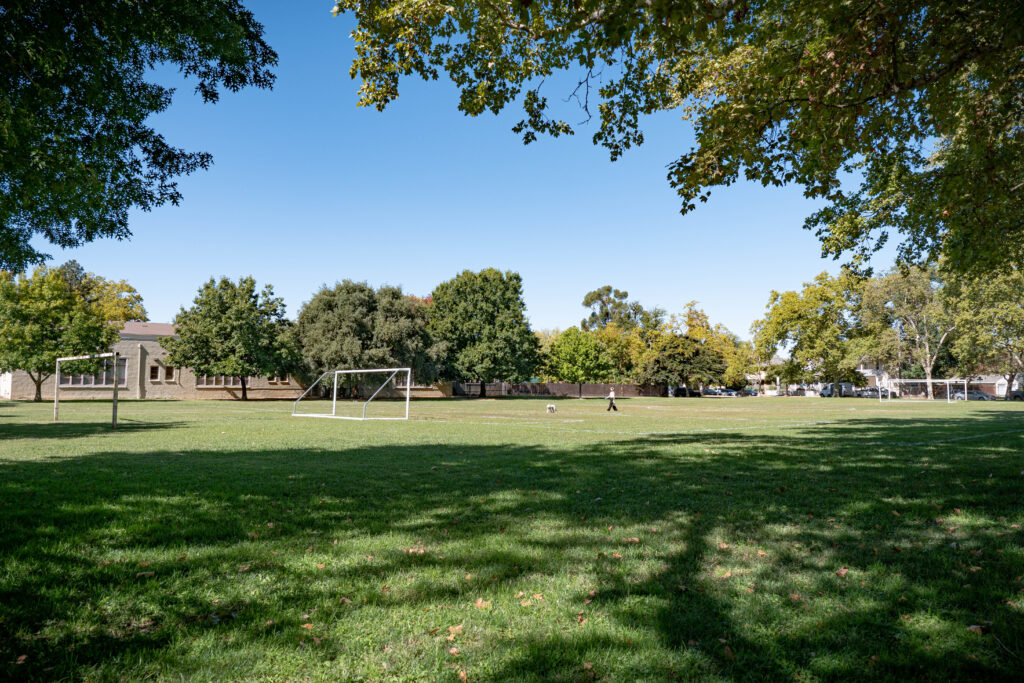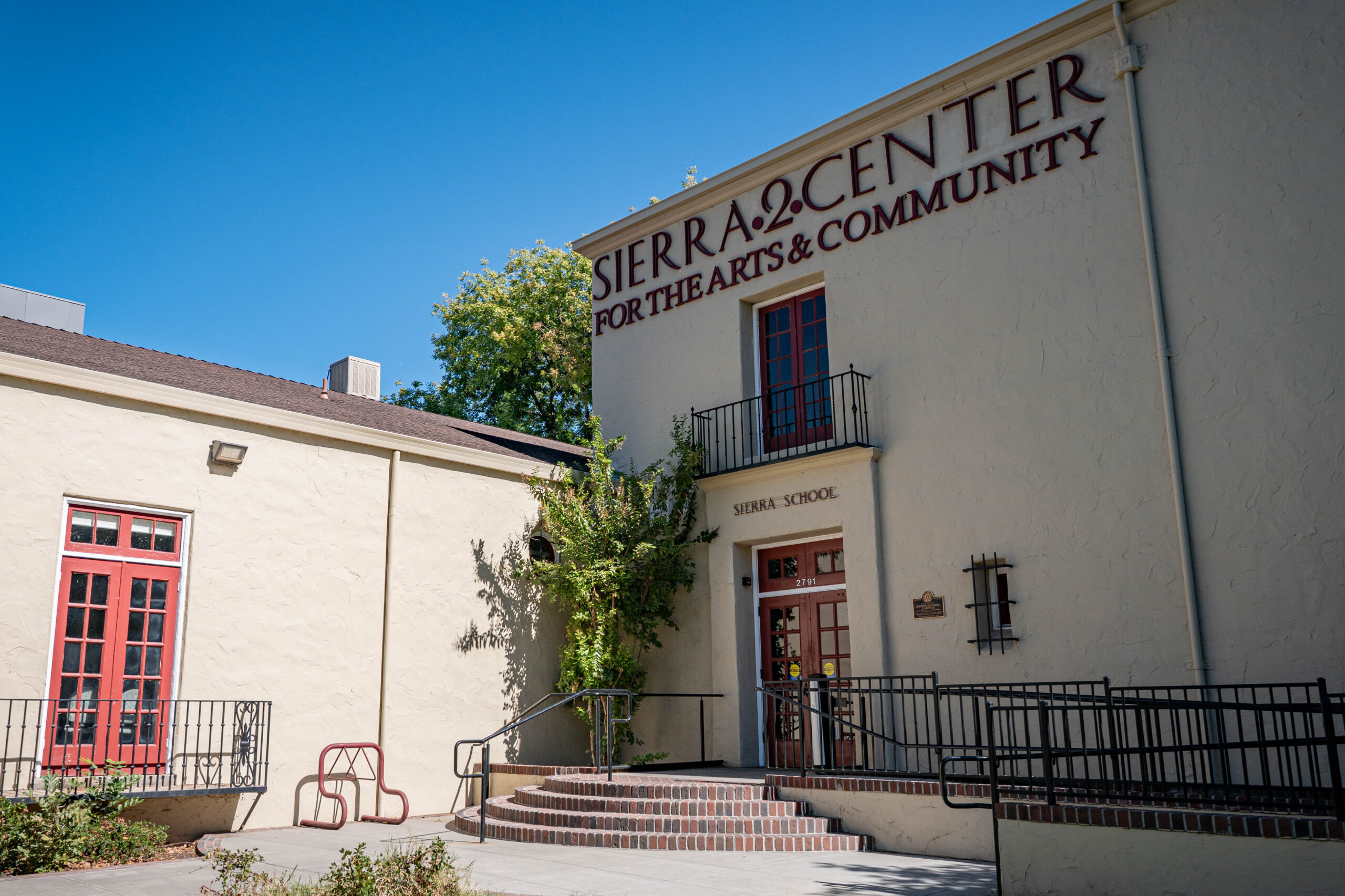The Abridged version:
- There are 140 neighborhood associations in Sacramento. The most active ones can have significant influence over decisions at City Hall.
- Their opinion is important to elected officials. Some started their careers volunteering for a neighborhood association.
- Some issues neighborhood associations take on can generate controversy and internal disagreements.
In Sacramento’s Curtis Park, the threat was to demolish a historic school building for a DMV parking lot.
In North Natomas, it was the failed promise of a town center as the centerpiece of a commercial development project.
And, in East Sacramento, it was the planned development of a six-story apartment complex in an area of single-family homes.
Dozens of neighborhood associations have formed throughout Sacramento, each with its own impetus, organizational structure, resources and distinct personality. A city database lists more than 140 of them, and the active groups can have a significant impact on the character and quality of life in neighborhoods large and small.
While some neighborhood associations have a board, bylaws, monthly meetings and dues, others gather informally to plan a community event or two.
Sierra Curtis Neighborhood Association (SCNA) in City Council districts 5 and 7, for example, bought the old Curtis Park school site and created and now operates a community center with a theater, senior center and room rentals. On the other hand, Council District 5’s Fullertown Neighborhood Association near Sacramento Executive Airport has a small board whose members rarely rotate off, no building, neighborhood park or formal event space. Yet both get ample attention from District 5 City Councilwoman Caity Maple.
“We represent over 65,000 people. There is only one of me,” Maple said. “To be a good representative, you need to be connected to the communities you represent. I can’t imagine doing my job without them.”
Associations can be a political springboard
Some associations form to rally against perceived threats or to advocate for resources or services. Others serve to connect residents, host occasional social events and stay informed. What they share is their significance to elected officials, many of whom began their own political careers as members and leaders of neighborhood associations.
Jeff Harris, a former District 3 council member, is one of them. A board member of the River Park Neighborhood Association during the 2008 recession, when the city was closing community pools, he worked with his neighbors and former City Councilmember Steve Cohn to keep the Glenn Hall Park pool open. His advocacy won him a parks commissioner position, which in turn led to election to the City Council. Throughout his two terms, he viewed neighborhood associations as critical partners in getting city business done – from cleaning up Gardenland Park to solving localized flooding in East Sacramento.
Associations often the first to flag problems
“If there were issues in the neighborhood, the neighborhood associations were the first to know about them and were a concentrated voice to contact me so that I could use whatever resources or power of policy I had available to help solve them,” Harris said. “I’m a real believer in them.”
“I have a staff member at every neighborhood association meeting,” said current Sacramento City Councilmember Mai Vang, whose District 8 includes Meadowview, North Laguna Creek and Valley Hi, among other neighborhoods. “They are bridges. They are our eyes and ears on the ground.”
One of her most active constituents is Jesus Cervantes, president of the Deerfield/Mesa Grande Neighborhood Association in the Valley Hi area. Cervantes said the association maintains close ties with the Sacramento Police Department and Vang’s District 8 office. In the wake of a fatal shooting on Armadale Way last May, for example, the group met with city officials to talk about the raucous street party that preceded the shooting and urged the city to increase police presence in the neighborhood to prevent future violence.
But mostly, he said the association’s interactions with city officials are more mundane: a request to have the basketball court lines repainted at Willie Caston Park, along with more park benches and a little library box for neighborhood children. Cervantes said Vang’s office took care of each request.
The struggle to find members and leaders
Neighborhood associations of all sizes often struggle with recruiting members and leaders. Ryan Green, treasurer of the Friends of Capitol Mansions Neighborhood Association in District 4, said their focus is on keeping the historic area free of trash. While he said they have good relations with City Hall, he doesn’t believe the association can get much done, since many residents are renters and work full time.
“We are trying to do more,” he said. “It takes more people to make that happen. We plan social events and alley cleanups, but anything that requires follow-through becomes a struggle.”
Development projects common topic for advocacy
Other neighborhood associations focus heavily on development projects. Lynn Lenzi was attracted to the North Natomas area because the development plan envisioned a town center that would serve as a gathering place and a transportation hub – a bikeable and walkable community where people could live, work and engage in civic life.
“Instead, the city allowed a Safeway shopping center/strip mall on the land designated for the town hall,” she said. “That woke many of us up, and we realized we had to start advocating for ourselves.”
“We live here. The developer does not.”
Lynn Lenzi, North Natomas
They formed the North Natomas Community Association in 2004. The group has since created a development checklist for each proposed project, including criteria for trees, landscaping, roads, parking and density. The group is currently opposing the development of an industrial park on 475 acres of county agricultural land. Opponents argue the project will violate the Natomas Basin Conservancy Plan. They’ve sent letters to the City Council and the planning commission, opposing the plan to annex the land to the city.
Lenzi acknowledged that they’re not always successful in preventing or guiding development in the way they’d like, but over the past 20 years, they’ve made significant inroads.
“We don’t always get what we advocate for,” she said. “But it does help for our elected officials to know that someone is watching them. We live here. The developer does not.”
In East Sacramento, two associations scrutinize 300-unit project
In the well-established area of East Sacramento, construction of a mixed-use, 300-unit apartment complex at the old Mary Ann’s Bakery site on Alhambra Boulevard between C and D Streets has at least two neighborhood groups fuming and frustrated about the scale of the project.
One of them, the Casa Loma Terrace Neighborhood Association, formed in response to the proposal. Association member Ann Broderick was one of about 20 representatives from neighborhood associations from throughout the city who recently gathered in Curtis Park with a newly formed Neighborhood Associations Leaders group to air grievances and share strategies for building stronger, more effective associations.
“That’s why we came here,” she said. “We’re not getting anywhere. We are looking for a coalition. We want them to listen.”
Phil Pluckebaum, District 4 city councilmember, hasn’t taken an official position on the project, but he said he supports high-density housing in urban areas and that the project will shield the neighborhood from nearby freeway noise.
“Now, because of the strength of neighborhood groups that have blocked development for so many decades, we are in a housing crisis,” he said. He added that he loves neighborhood associations and they “do great things.”
The project is awaiting review by the city attorney’s office to determine how recent pro-housing legislation may affect its approval. The councilmember predicts that if developed, the project will not destroy the neighborhood, comparing it to other major projects built despite neighborhood opposition, such as the Mercy General Hospital expansion 20 years ago and McKinley Village 10 years ago. Said Pluckebaum: “The sky hasn’t fallen.”

Some fights divide neighbors
And just as individual neighborhood associations within districts don’t always agree, divisions also occur within neighborhood associations, leaving city officials to deal with the fallout.
In Curtis Park, for example, an unofficial dog park on city land behind Sierra 2 that became very popular during the pandemic divided the community and the SCNA board of directors. Proponents said the park created community by attracting people and pets together. Opponents argued that the dogs were ruining the site’s playing field and bringing unwanted noise.
The controversy raged for months. A pilot project to fence in a small area behind Sierra 2 for unleashed dogs was displeasing to both sides, and the city eventually took it down. When the city presented alternative sites, a board majority voted to support a dog park to be built in Land Park instead. That project has not yet materialized.
“It was really difficult to be neighbor to neighbor and to have such polarized feelings,” said SCNA Board Vice President Kathy Les. “In the following year, the board healed by coming together and working on events and programs that are the foundational part of our neighborhood association.
“They put the organization first.”
Dorsey Griffith is a Sacramento-based freelancer and resident of Curtis Park.
What to know if you’re thinking about joining your neighborhood association
“Be prepared to invest time and energy to improve your neighborhood.” – Jeff Harris, former District 3 City Councilmember
“You limit your opportunities to connect with neighbors if you shy away from joining your neighborhood association. By joining, you get the opportunity to meet and work with those who do and don’t think like you and to connect in surprising ways.” – Kathy Les, vice president, Sierra Curtis Neighborhood Association
“A community association is a great way to get involved and improve your community by working with others on a common goal, an opportunity to influence policy and development, foster pride, create networks and make new friends.” – Lynn Lenzi, president, North Natomas Neighborhood Association
“A neighborhood association provides a sense of security for its members, similar to a family. Neighbors can be diverse in their backgrounds and personalities, but within the association, quality of life becomes your mutual purpose.” – Nancy Chelini, secretary Fullertown Neighborhood Association
“If you are thinking about it, you should go. If you are not thinking about it, why not? It’s a struggle to get people to show up, but it’s worth doing. If you don’t like what your neighborhood association is doing, getting involved is a way to change that.” – Ryan Green, treasurer, Friends of Capitol Mansions Neighborhood Association
“Before I joined, our association was exclusive, not open to other ideas. Neighborhood associations are often an extension of the NIMBYs. We like to advocate for things rather than being obstructionists.” – Isaac Gonzalez, president, Tahoe Park Neighborhood Association
“There are a lot of hoops to jump through, and it is time-consuming to start a neighborhood association. Patience and persistence are required.” – Carl Seymore, president, Casa Loma Terrace – East Sacramento Neighborhood Association.
For more information about the newly formed Neighborhood Association Leaders group, contact Garrett Jensen at gjjensen423@gmail.com.
Correction: An earlier version of this story misstated the number of stories in a proposed 6-story apartment building in East Sacramento. Corrected at 10:42 a.m. Oct. 13, 2025.
